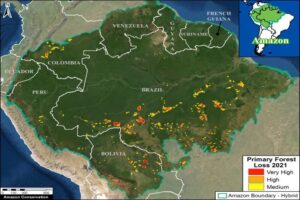
The Madden-Julian Oscillation (MJO)
Introduction: Why in News?
The article discusses the influence of the Madden-Julian Oscillation (MJO) on the early arrival of the southwest monsoon over Kerala and Mumbai in May 2025. The monsoon reached Mumbai two weeks ahead of schedule, marking its earliest arrival on record. The MJO was a key atmospheric phenomenon contributing to this anomaly, as recognized by the India Meteorological Department (IMD).
This development is highly relevant for CLAT Current Affairs 2026 because it intersects with topics in Indian geography, climate governance, and environmental law. Understanding the science behind monsoon patterns is critical for aspirants preparing for law exams that test analytical comprehension through real-world issues.
Point-wise Summary
- What is the Madden-Julian Oscillation (MJO)?
- The MJO is a moving system of winds, clouds, and pressure that travels eastward around the equator.
- Identified by Roland Madden and Paul Julian in 1971.
- It brings rain when active and suppresses rainfall in its dormant phase.
- How Does the MJO Move?
- The system travels at 4–8 meters per second.
- It circles the globe every 30–60 days (sometimes up to 90 days).
- It creates alternating zones of heavy and reduced rainfall.
- Geographical Impact
- Most influential in the tropical zone (30°N–30°S).
- India lies within this band, hence significantly affected.
- Multiple MJO cycles may occur in one monsoon season.
- MJO and Indian Monsoon 2025
- The active MJO phase contributed to:
- Increased cloud convection.
- Enhanced rainfall in coastal regions.
- The monsoon reaching Mumbai by May 26 (two weeks early).
- This was the earliest monsoon onset in Mumbai’s recorded history.
- The active MJO phase contributed to:
- MJO vs. El Niño
- Some correlation exists between MJO strength and El Niño conditions (warming of the Pacific).
- However, strong El Niño years do not always mean weak MJO activity.
- El Niño strength often correlates with poor monsoons, but MJO phases can still produce regional rainfall.
- Monsoon Dynamics and Forecasting
- IMD tracks MJO to issue rainfall forecasts.
- An active MJO increases predictability of early rainfall in regions like India.
- In May 2025, the MJO’s active phase was crucial for early-season rain in Kerala and Mumbai.
Key Terms Explained (CLAT-Friendly Notes)
- Madden-Julian Oscillation (MJO): A recurring atmospheric phenomenon that travels around the equator and influences rainfall and storm activity.
- Equatorial Band: The region between 30°N and 30°S where MJO effects are strongest.
- El Niño: A climate pattern involving the warming of Pacific Ocean waters, affecting global weather.
- Convection: The upward movement of moist air, leading to cloud formation and precipitation.
- Suppressed Phase: The part of the MJO cycle where rainfall activity decreases significantly.
Relevance to CLAT 2026 Aspirants
- General Knowledge and Current Affairs
- Topics like the MJO and El Niño are important under the “Environment & Ecology” and “Geography & Climate” sections.
- Questions may test knowledge of monsoon science and its socio-economic impact on India.
- Legal Reasoning
- MJO-related monsoon variability impacts agriculture, irrigation, and disaster preparedness.
- Aspirants may encounter passages on government duties under Article 21 (Right to Life) related to flood and drought management.
- Analytical and Comprehension Skills
- Understanding how global atmospheric phenomena influence national climate helps in interpreting data-heavy passages.
Conclusion
The MJO is a critical climatic system that influences rainfall in India. In 2025, it played a vital role in triggering the earliest monsoon arrival in Mumbai. For CLAT 2026 aspirants, this topic provides a perfect blend of climate science, policy relevance, and legal reasoning opportunities. It serves as a reminder of the interconnectedness of global atmospheric systems and local weather outcomes in India.




